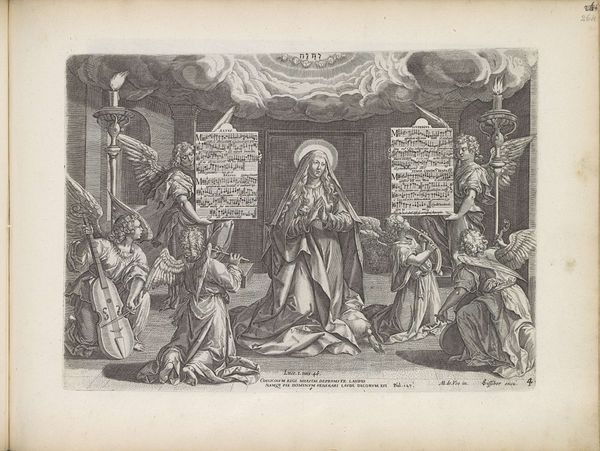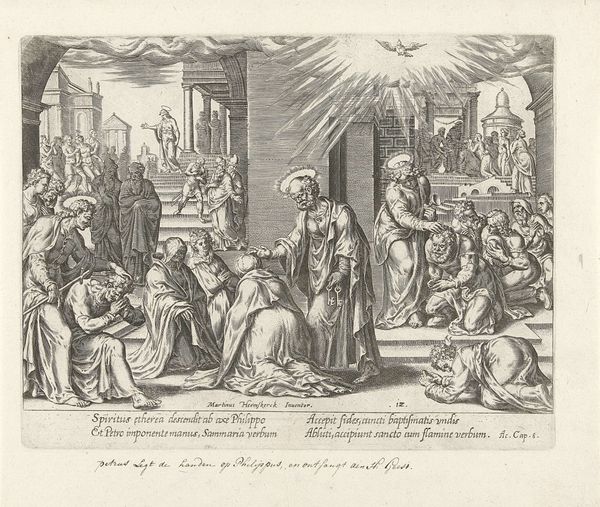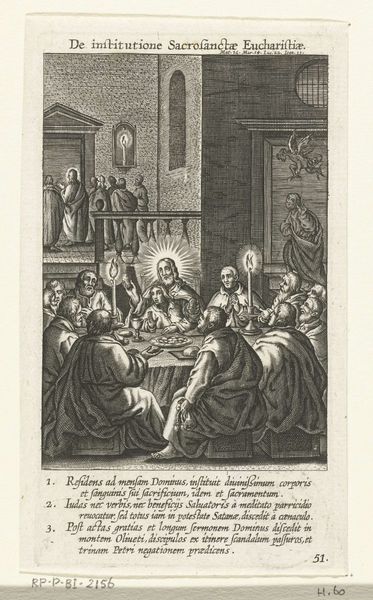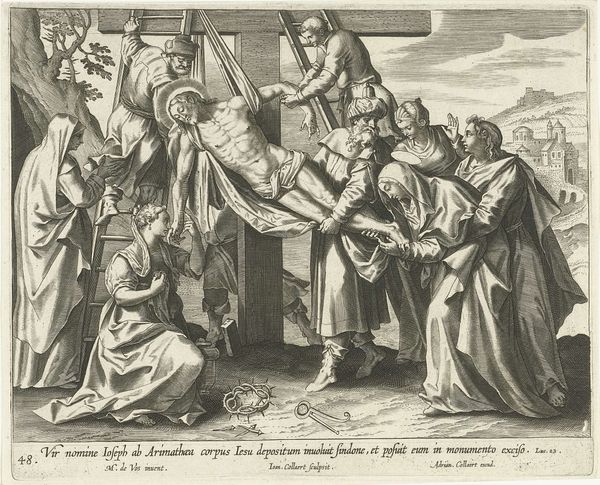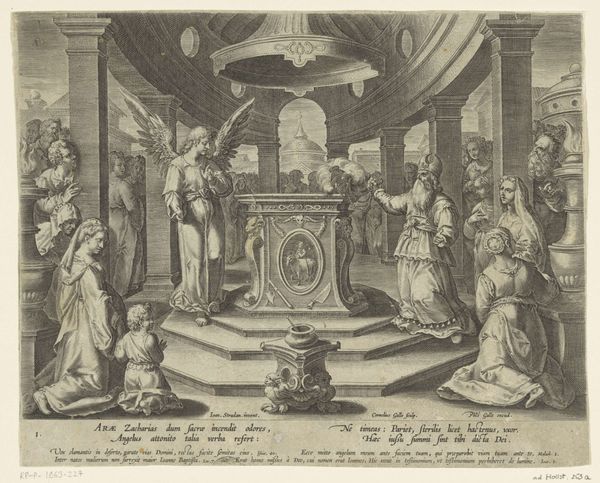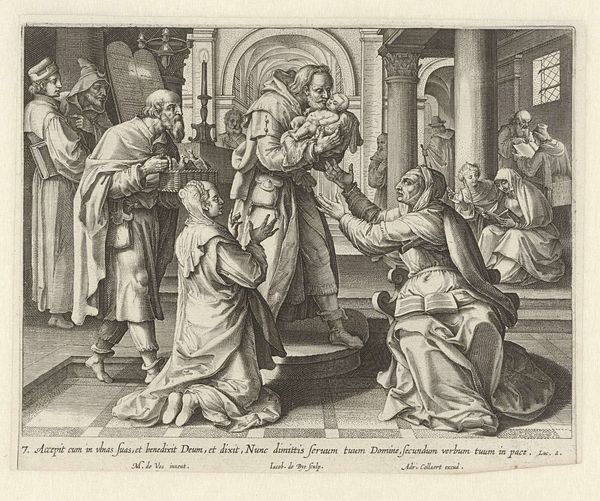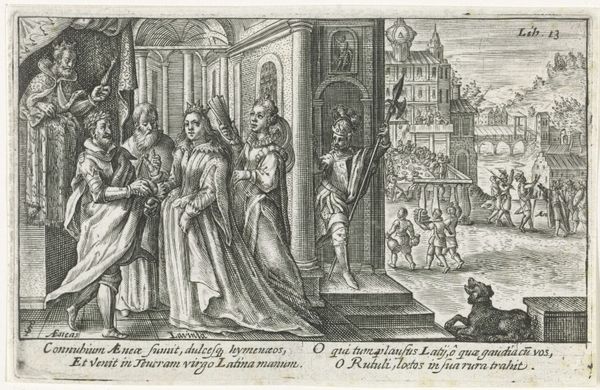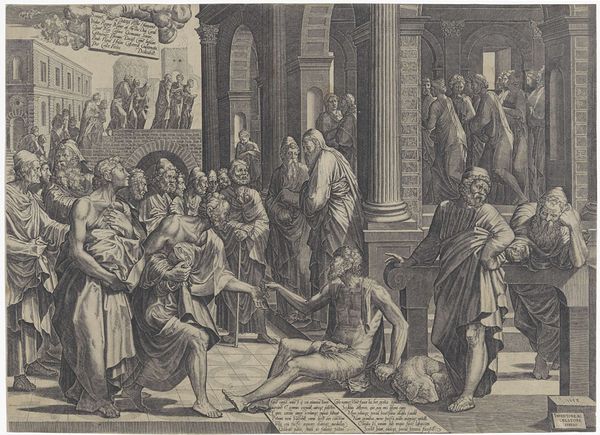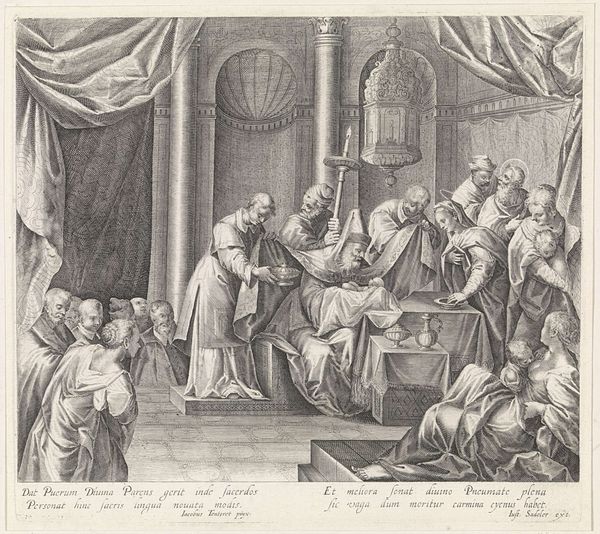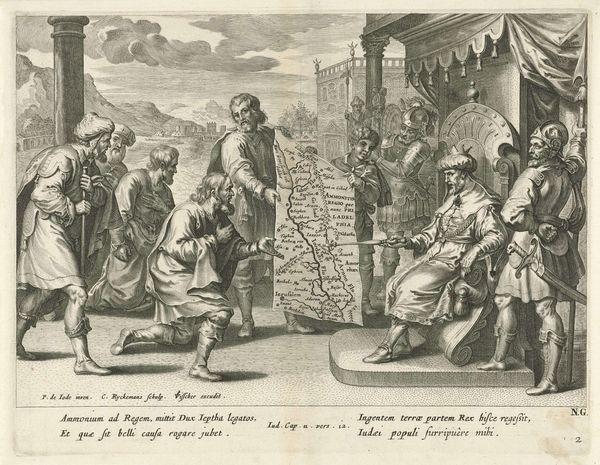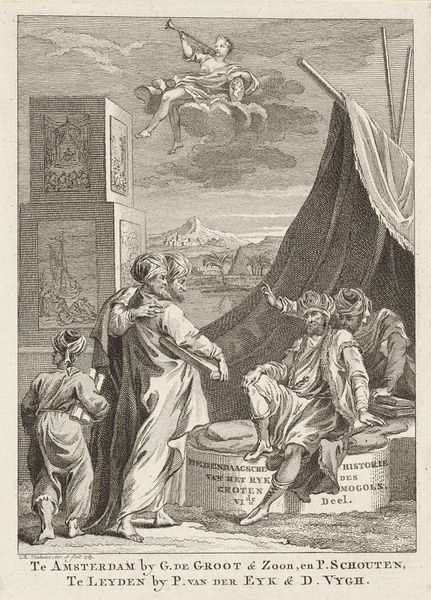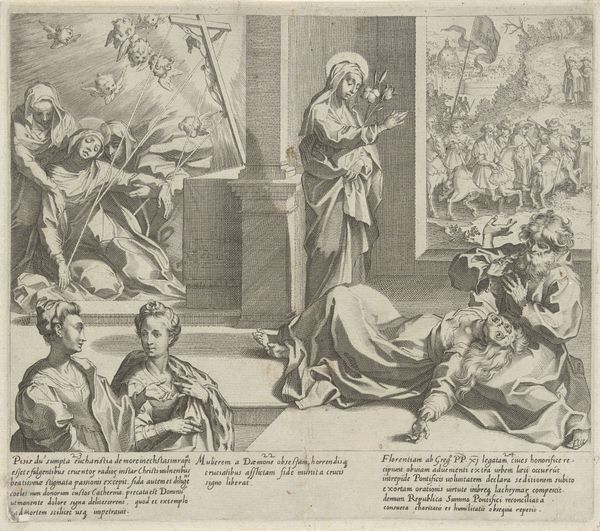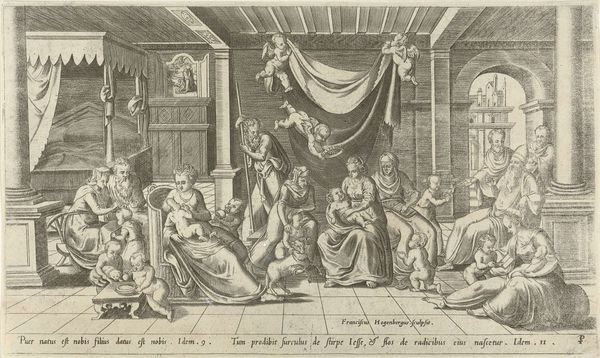
Dimensions: height 210 mm, width 292 mm
Copyright: Rijks Museum: Open Domain
Editor: Here we have Johann Sadeler's engraving, "Maria Surrounded by Music-Making Angels," from 1585. The detail achieved with engraving is incredible, almost overwhelming. What strikes me are the depictions of music in this piece: it's literally held aloft, becoming structural, supporting the scene itself. What else do you see in it? Curator: Well, looking at it from a materialist perspective, the engraving itself becomes a crucial point. Think about the production process. Sadeler, an established printmaker, likely had a workshop. The labour involved - from design to carving the plate and pulling prints - speaks volumes about artistic production in the late Renaissance. The paper itself, its source, its distribution networks, all factored into how widely this image of the Virgin Mary could circulate. How might its reception change depending on where, geographically and culturally, these printed images appeared? Editor: So the physical process of creating and distributing the print is as significant as the religious symbolism? Curator: Exactly! And let's consider the accessibility of engravings compared to, say, a painted altarpiece. This print could reach a far wider audience, shaping and reflecting popular piety through mass production. The "old engraving style," as one tag describes it, is more than just an aesthetic; it’s a specific set of labor practices and material choices that dictate the final artwork. The means of production dictates its reach. Editor: I hadn't considered the democratization aspect before. So, is it fair to say that studying the printmaking process gives us insights into the consumption and distribution of religious imagery during that time? Curator: Absolutely. It highlights how art isn’t just about the "high art" subject matter but also the material conditions that allow it to exist and circulate. Examining the production and material aspects challenges a focus solely on religious icononography. What do you take away from that understanding? Editor: It definitely pushes me to consider art beyond the purely aesthetic, and consider it more within its historical and economic context. Thinking about who had access to art because of its form feels essential.
Comments
No comments
Be the first to comment and join the conversation on the ultimate creative platform.
